Myanmar, also known as the Golden Land, celebrates the present carnivals that represent the various cultures, traditions, and religions of this country. Festivals in Myanmar include traditions based on Buddhist practices and stories that fill the country with music, dancing, and parties. From showering one another with water that demonstrates the washing of negativity down, to hot air balloons that shoot light into the dark sky, the artistic carnivals of Myanmar are an experience of one of a kind. If you are planning a vacation to Myanmar, make sure to align it with how you get to attend one of the festivals.
10 Famous Festivals in Myanmar
Explore Myanmar’s vibrant essence through its famous festivals. Here, centuries-old traditions, spiritual devotion, and colourful celebrations come together to create unforgettable experiences.
1. Thingyan, Water Festival
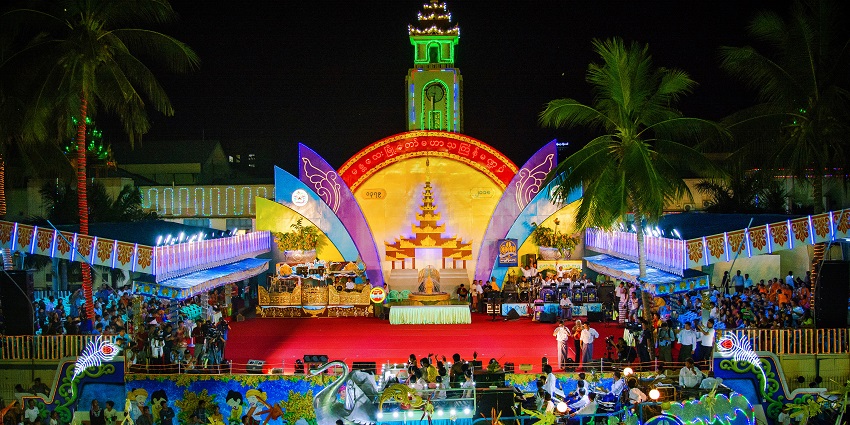
Photo: Linnyankha / Wikimedia Commons
Thingyan is one of the most popular carnivals in Myanmar as it’s the jubilee that celebrates the Burmese New Year. It’s held in numerous corridors of the country that turn streets into a water-splashing arena where people spot water at one another. The splashing and throwing of water is a ritual that symbolises the washing of sins and mischances to produce a new time. In addition to the excitement, glamour and artistic troops entertain the gathering through culturally elegant music, balls, and other events. Colourful food booths are aligned with a variety of succulent Burmese foods.
Location: Yangon and Mandalay
Month Of Celebration: April
Suggested Read: Check Out Myanmar Nightlife
2. Shwedagon Pagoda Festival
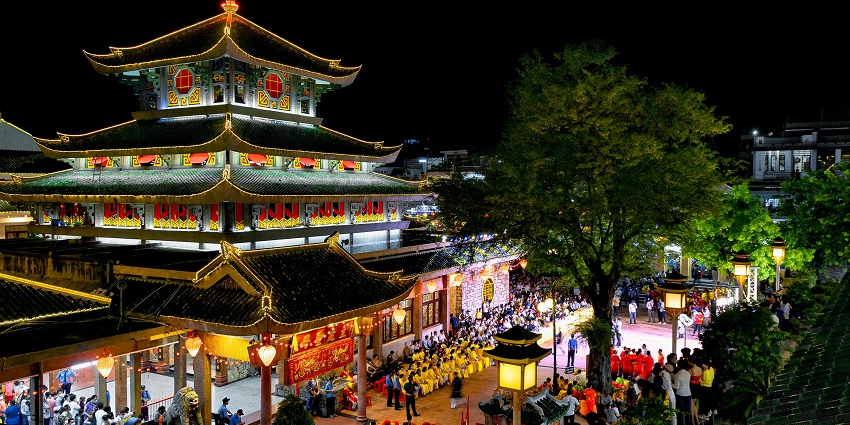
Photo: Văn Long Bùi / Pexels / Image For Representation Only
Shwedagon Pagoda is a festival that marks the celebration of the construction of Myanmar’s most significant sacred Buddhist site, Shwedagon Pagoda in Yangon. Devotees of this faith kneel to light candles and burn oil lamps in the pagoda. A huge festival is held here when the territory around the pagoda turns into a theatre of non-stop music performances, traditional dances, and religious ceremonies. Around the pagoda, markets are set up where you can buy souvenirs and various trinkets made by local artisans. Several food stalls are also set up which sell local delicacies and the highlight item is “mont hin gar” literally translated as coconut rice noodle soup.
Location: Yangon
Month Of Celebration: February or March
3. Taunggyi Balloon Festival
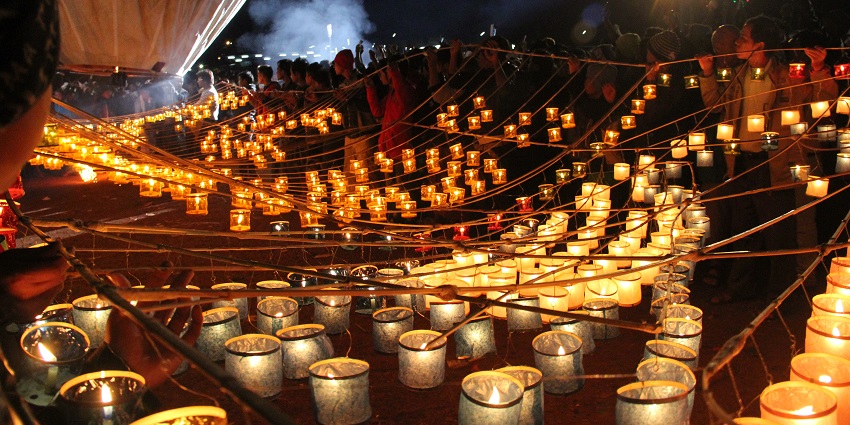
Photo: Maungthargi / Wikimedia Commons
The Taunggyi Balloon Festival is perhaps the most unique type of festival that is celebrated in Myanmar, and its uniqueness is its peculiarity. This festival is celebrated to mark the end of the rainy season and the arrival of the winter season. The main essence of the festival lies in the exquisitely designed hot air balloons which are released at night creating a spectacular view. Some balloons even have engravings of Buddhist scriptures and some have firecrackers. A variety of competitions, traditional dances, and other cultural displays are organised and people gather to attend and even participate in such events.
Location: Taunggyi, Shan State
Month Of Celebration: November
Suggested Read: Yangon Nightlife
4. Phaung Daw Oo Pagoda Festival
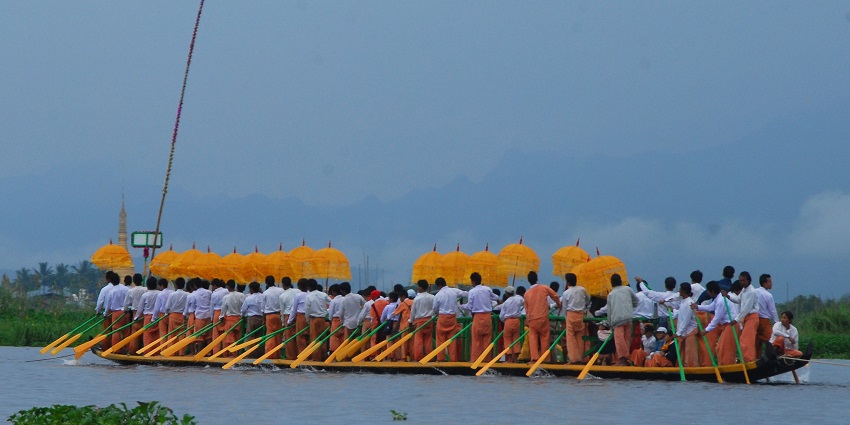
Photo: Pupuce22 / Wikimedia Commons
Celebrated annually in Inle Lake, the Phaung Daw Oo Pagoda Festival takes place for over 18 days and is done to honour the image of the Buddha housed at Phaung Daw Oo Pagoda. This festival is an affair of vibrant colours, culture and events. The ritual of the festival is that five images of Buddha, decorated in ornaments, are seated on a decorated barge that resembles the image of the Karaweik, which is a mythical bird. The decorated boat is then towed across the village and gives people a chance to pray and pay homage. During the tour of the images, one image stayed back at the temple to protect.
Location: Inle Lake, Shan State
Month Of Celebration: October
5. Kason Full Moon Festival
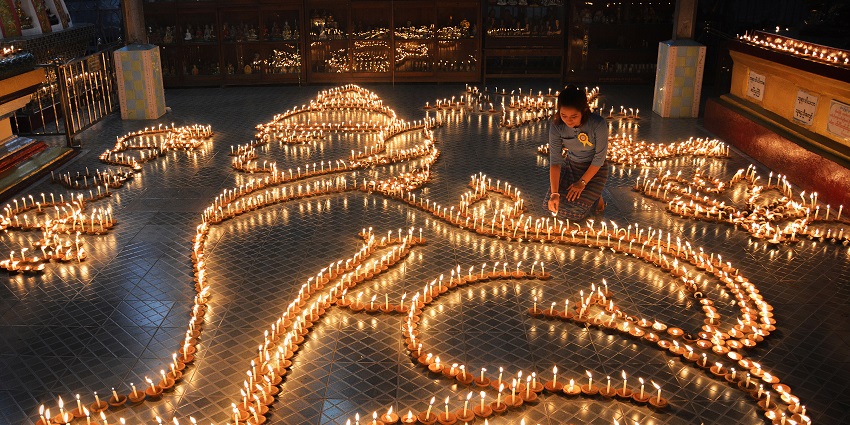
Photo: Aung Myint Htwe / Wikimedia Commons / Image For Representation Only
Usually celebrated in May, on the full moon day, the Kason Full Moon Festival is celebrated to honour the three most important events of the life of Gautam Buddha which are his birth, his attaining enlightenment and Nirvana, all that happened under the Bodhi Tree. In this festival, the main highlight is the pouring of water into the roots of the Bodhi trees in all monasteries and Buddha Temples throughout the country. This act showcases the respect for trees and Budhha. People dress up in traditional attires and visit pagodas and monasteries with a pot of water in their hands.
Location: Nationwide, with special events in Bagan and Mandalay
Month Of Celebration: May
Suggested Read: Places To Visit in Myanmar
6. Ananda Pagoda Festival
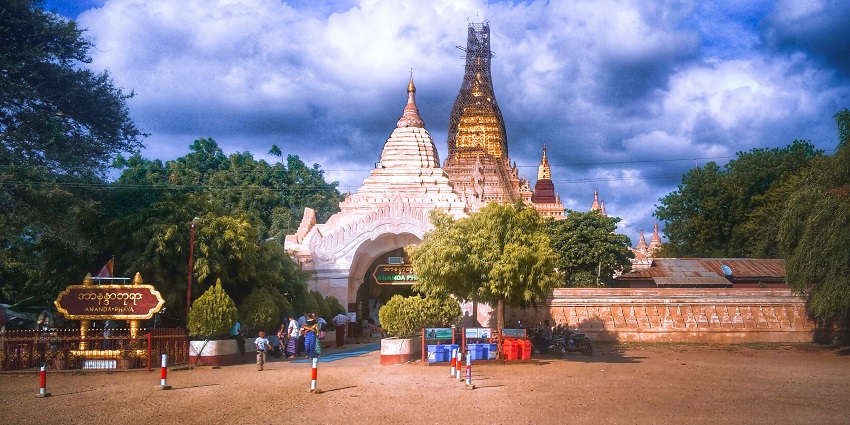
Photo: Ye Phyo Paing / Wikimedia Commons
Celebrated annually, the Ananda Pagoda Festival takes place specifically at Ananda Temple located in Bagan, Myanmar. Like most of the festivals, this too is dedicated to honouring the teachings of Buddha and the culture of the region. The main highlight of the festival is the grand procession of the monks where they receive the alms and other offerings from the devotees, a typical practice deeply connected to Buddhism, and donation of “htamane,” a local rice dish. To add more charm to the festivities, stalls and markets are set up where the local artisans display their skills and crafts and you get to taste local cuisine.
Location: Bagan
Month Of Celebration: January
7. Waso Full Moon Festival
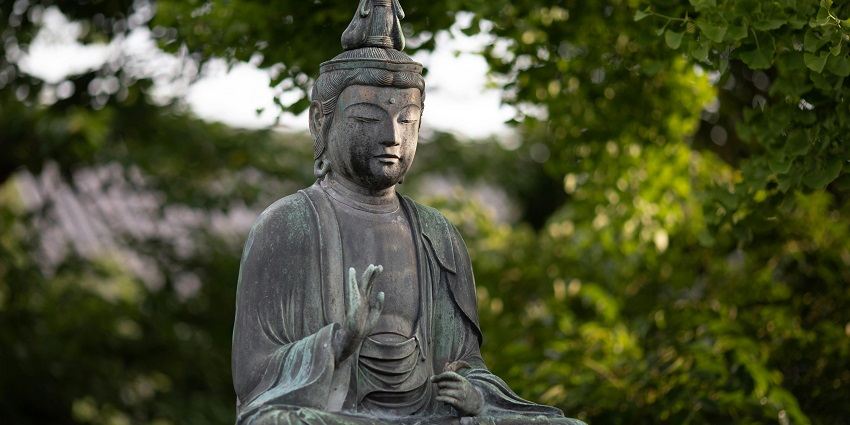
Photo: Aleksandar Pasaric / Pexels / Image For Representation Only
As the name of the festival suggests, the Waso Full Moon Festival is observed on a full moon day in July to celebrate the two main events of Buddha’s life, his conception and the first sermon post attaining his enlightenment. As the festival marks the beginning of the Buddhist Lent, which is three months, monks return to monasteries for the meditation and study of Buddha’s sermons. As per the rituals of this festival, monks are given offerings of cloth, food, and other necessities by the devotees from various communities and this event is called Waso Robe Offering.
Location: Nationwide, with special events in Yangon and Mandalay.
Month Of Celebration: July
Suggested Read: Yangon Travel Guide
8. Naga New Year Festival
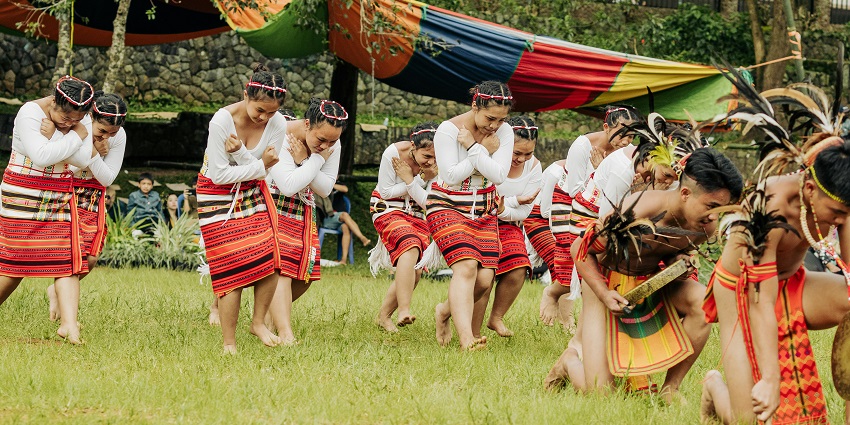
Photo: terence b / Pexels / Image For Representation Only
Mainly celebrated by the Naga tribes living in the remote regions of Myanmar as well as Northeastern India, Naga New Year Festival falls in January. Naga people wear traditional attire and jewellery, perform dances, indulge in music and rituals to celebrate the festival. Every event showcases the unity and unique culture of the tribe. People from other communities can attend these events to see the grandeur and uniqueness of the Naga culture. The community organises communal feasts which consist of traditional naga dishes and rituals are performed to pay homage to the ancestors.
Location: Naga Land (Sagaing Region)
Month Of Celebration: January
9. Thadingyut Festival Of Lights

Photo: Myat_Noe_Eain / Wikimedia Commons
The Thadingyut Festival is observed to commemorate the end of the Buddhist Lent and lasts for three nights. It is one of Myanmar’s main festivals held every year. Throughout the country, the houses, temples, and streets are decorated with candles and lanterns. These lights are a symbol of erasing the darkness and celebrating the return of Buddha. People gather around to remember their elders through funerals, feasts, and other related ceremonies. Young people ask for forgiveness for their wrongdoings and the elders forgive them and give them gifts.
Location: All over the country, with major festivities celebrated in Yangon and Mandalay.
Month Of Celebration: October
Suggested Read: https://tripxl.com/blog/shopping-places-in-shanghai/
10. Tazaungdaing Festival of Lights

Photo: Christian Heimig / Wikimedia Commons
Celebrated in November, the Tazaungdaing Festival of Lights falls on the moon day and is one of the most vibrant festivals of Myanmar. Like all other festivals, even this festival is deeply connected with Buddhist traditions and marks the end of the rainy season. The entire country is illuminated with every corner being lit up, which also symbolises the win of light over darkness. The highlight of this festival is the hot air balloon competition, where different balloons, decorated in different designs are left in the sky, which creates a stunning view.
Location: Nationwide, with highlights in Yangon and Mandalay.
Month Of Celebration: November
These are the best festivals in Myanmar one can experience. Whether it’s the water splashing festival known as Thingyan, the hot air balloon festival in Taunggyi, or lighting the candles during the Thadingyut festival, every festival of Myanmar is deeply rooted in their culture and history and showcases the belief of Buddha and his teaching. If you want to experience the beauty of the country, make sure to plan it during a festival and the best way to do it is to plan it with TripXL.
Cover Photo: Aung Myint Htwe / Wikimedia Commons


 WhatsApp
WhatsApp
 Twitter
Twitter









